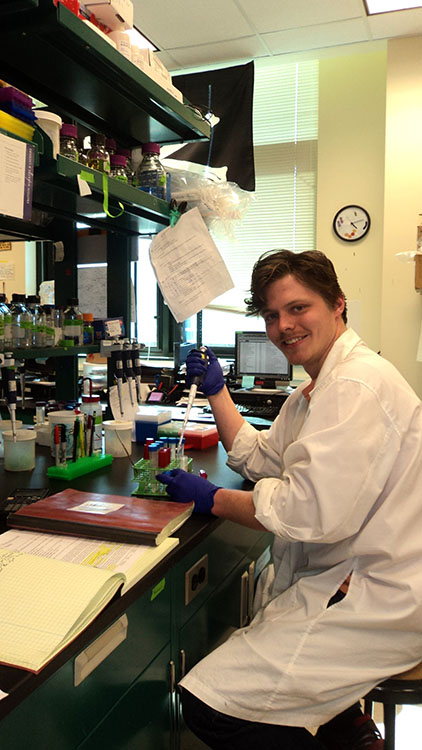Karatan Lab
Richard Sobe
Appalachian State University
Department of Biology
Rankin Science North
319 (Office), 303 (Lab)
828-262-6742

The NspS-MbaA Pathway
The disease cholera, characterized by severe diarrhea and vomiting leading to dehydration and potentially death, is caused by an aquatic bacterium called Vibrio cholerae. Members of this species may be found in a free-swimming state or attached to shellfish in the form of a biofilm. Biofilms consist of bacterial communities protected by a polysaccharide-DNA-protein matrix, and offer increased resistance to a variety of stressors including antibiotics, UV irradiation, and extreme pH. The transition between planktonic and biofilm-associated states is influenced by the relative concentrations of environmental factors such as stressors, cell density signals, and polyamines. The polyamine, norspermidine, has been shown to enhance biofilm formation in V. cholerae in a NspS/MbaA-dependent manner. NspS is a periplasmic protein and homolog of the ligand-binding component of ABC transporters believed to bind exogenous norspermidine. MbaA is a transmembrane protein with phosphodiesterase activity which degrades c-di-GMP, a second messenger which upregulates transcription of the biofilm-associated factors and thus enchances biofilm formation in V. cholerae.
We in the Karatan lab propose that, when bound to norspermidine, NspS undergoes a conformational change allowing for an interaction between this protein and the periplasmic region of MbaA leading to arrested phosphodiesterase activity. This arrest would lead to c-di-GMP accumulation and ultimately biofilm formation. If our current hypothesis is correct, this would be the first reported example of an ABC-transporter homolog involved solely in signaling. I am currently attempting to determine whether this interaction does in fact occur and what effects various concentrations of norspermidine and other polyamines have on this interaction. The first goal will be accomplished by adding specific tags to both proteins and detecting them via coimmunoprecipitation (CoIP) assays and Western blot analysis. Next, the influence of polyamines on the interaction will be determined by incubating cultures with various concentrations of several polyamines and analyzing lysates via CoIP and Western blot.